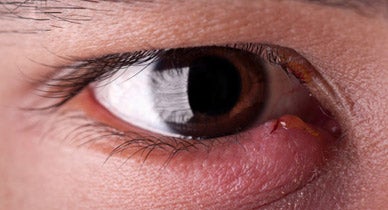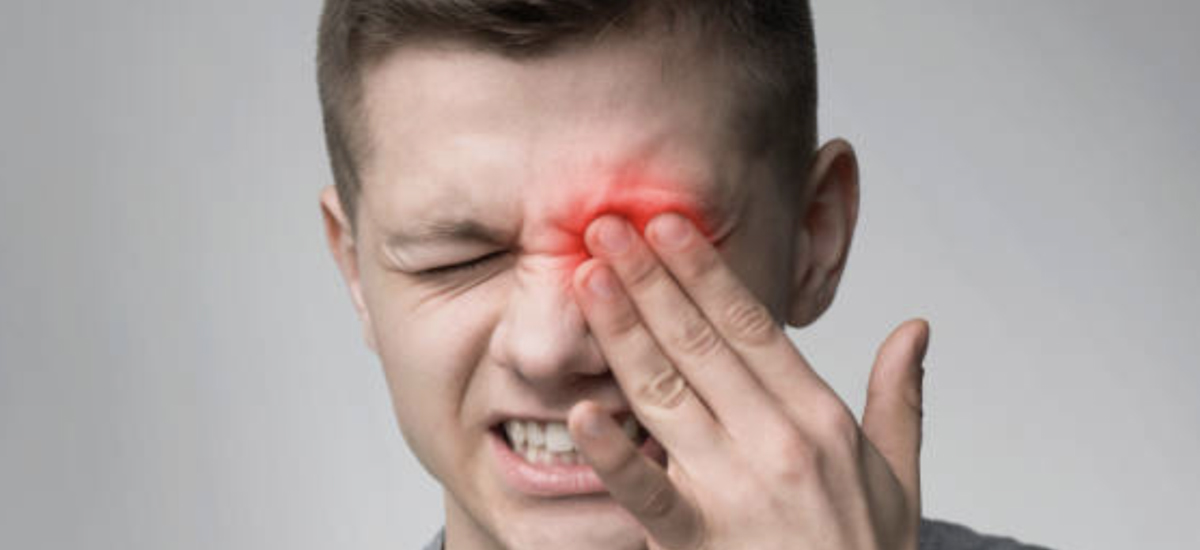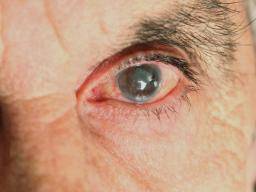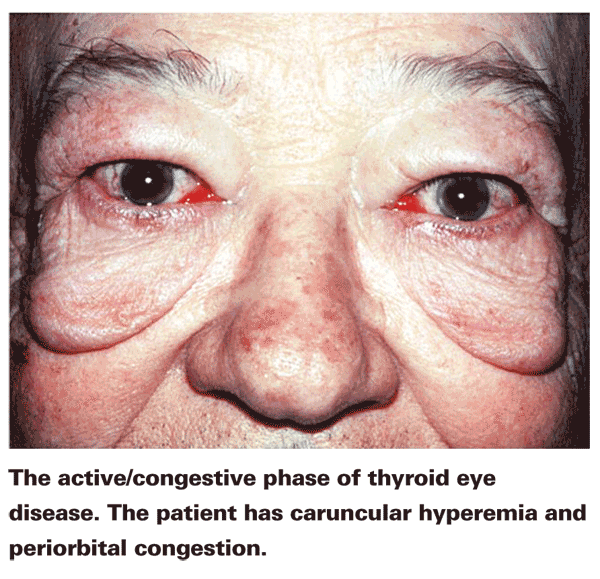Occasional Eye Pain
Eye pain is a catch-all phrase to describe discomfort on, in, behind or around the eye. The pain can be unilateral or bilateral — in other words, you can experience right eye pain, left eye pain, or the discomfort that affects both eyes. There's no evidence that right eye pain occurs more frequently than left eye pain, or vice versa.
Eye pain is a catch-all phrase to describe discomfort on, in, behind or around the eye. The pain can be unilateral or bilateral — in other words, you can experience right eye pain, left eye pain, or the. Optic neuritis often causes pain behind the eye or pain upon eye movement. 9 Optic neuritis is an inflammatory condition of the optic nerve, the cable that connects the eye to the brain. It inserts into the back of the eye and can be tugged slightly from side to side when the eye moves back and forth. When inflamed, pain occurs behind the eye.
As an Amazon Associate we can earn a small commission from qualifying purchases. This commission doesn't affect products prices.
There are several factors that often cause sharp pain just above the left eye. In the article we will consider the main causes of pain in the brow area, as well as methods of treatment and prevention of this problem.
There are numerous types of headaches, and numerous elements might cause them. Headache above left eye, for instance, might be due to a problem with the nerves or blood vessels in the area, or it can be a sign of infection. Headaches might come and go, but if your symptoms continues or worsens, call your doctor for appropriate examination and treatment.
1. Cluster Headaches
These are unusual vascular headaches that vary from stress headaches or migraine headaches. The American Headache Society reports that cluster headaches are more common amongst men between 20 to 30 years old, which are referred to as severe, stabbing headaches that take place around the eye or temple.
Cluster headaches might take place every other day as much as 8 times daily, lasting from 15 minutes to 3 hours. Other symptoms include tearing, nasal congestion, runny nose, sweating, and saggy eyelid. Causes may include irregular hormone or neurotransmitter levels, hypothalamus dysfunction, and dietary or ecological triggers.
2. Sinus Infection
Headache above left eye might be caused by sinus infections. You will feel pressure-like pain in some specific areas, which can become worse when you flex forward or do sudden head movements. Pain might be severer in the morning after draining mucus from the sinuses. Other symptoms include postnasal drip, sore throat, yellow-colored green nasal discharge, despair and mild to moderate-grade fever.
3. Glaucoma
Another condition that can cause headache above left eye is glaucoma. This condition is due to the build-up of pressure within the left eye that causes damage to the optic nerve, destroying peripheral vision and causing blindness.
4. Infection or Tumors
Any infections or growth in the left eye or brain can cause pain around the eye. Although infections or growths do not cause pain to the brain tissue, these can damage nerves and other tissues near the impacted eye.
5. Aneurysm
Aneurysms are abnormal blood vessels that balloon in the brain and can leak or burstcompletely, triggering bleeding, or stroke. Most hemorrhagic strokes occur between the brain and its delicate coverings, causing subarachnoid hemorrhage. This causes a sudden, unbearable headache near the back of your head, can cause pain in the left or right eye. See your doctor right away.
6. Trauma
Trauma to the head or direct injury near the left eye can cause fractures and bleeding within the skull or the area around your eye. This prevails during contact sports.
7. Migraine
Migraine headaches are frequently accompanied by nausea, vomiting, dizziness, light level of sensitivity (photophobia), and visual symptoms.
When to Worry
Symptoms associated with serious headache above left eye may include the following circumstances:
- Morning headaches.
- Head pain becomes worse when straining, coughing or sneezing.
- Vomiting however no nausea.
- Abrupt and “worst headache” ever.
- Constant or worsening headache.
- Weakness in arms/legs.
- Personality changes.
- Vision changes.
- Seizures.

Treatment for Sharp Pain Above Left Eye
1. Treat Cluster Headaches
- Inhaling 100% oxygen through a face mask.
- Triptan injections, which work for intense cluster headaches. This type of medication can also be used as a nasal spray, which might take longer to work.
- Zolmitriptan (Zomig) is another triptan medication used as a nasal spray or as oral tablets to relive cluster headaches.
- Octreotide (Sandostatin) is an injectable artificial hormone that imitates somatostatin, a natural brain hormone.
- Intranasal anesthetics such as lidocaine may work versus cluster headache.
- Dihydroergotamine in the intravenous or intranasal type may be used for this type of headache.
2. Treat Migraine
Migraine treatments include:
- Prescription drugs that work by acting upon specific receptors in the nerves/ capillary in your head.
- Over-the-counter rescue medications to stop headaches.
- Other preventive medications that should be taken daily to reduce the frequency of migraine headaches.
3. Prevent Triggers
There are numerous aspects that can trigger headaches, including:
- Alcohol use (don’t consume alcohol, alcohol is harmful for health).
- Caffeine usage.
- Sugary foods and processed foods.
- Avoiding meals.
- Bright lights.
- Loud sounds.
- Absence of sleep or changes in sleep patterns.
- Direct exposure to strong smells, including cigarette smoke.
4. Self-Care Tips
A minor headache above left eye can be treated successfully with basic remedies. However, if you experience a sudden sharp above left eye, “worst headache ever”, call 911 or go to an emergency clinic immediately. Helpful home treatments include:
- Keeping the house peaceful and lights dim.
- Using an ice bag as cold compress to the affected area.
- Getting physical therapy.
- Having a warm bath or shower.
- Lying down for a nap.
- Going out for a walk and fresh air.
- Having a neck massage.
- Using the thumb and index fingers to use pressure to the affected area.
Sharp Pain Above Left Eye that Comes and Goes

There can be a few reasons somebody has this brow-type pain. The first is just a basic headache, however centered over the brow; this is not your normal, stress type headache, however headaches can many times manifest in unusual methods, even when the cause is the same as a general headache.
Secondly, there is a paranasal sinus behind the eyebrow which, if complete or if there were an infection of that sinus, might cause this brow-type pain. If you have symptoms of sinus fullness of discomfort, then this may be something you want to resolve with your primary care doctor.
Considered that you have stinging eyes, it’s quite possible that the eyes are to blame for this brow pain. The most typical reason for the eyes to be causing these symptoms is because of an inefficient tear film syndrome. An inefficient tear film can be due to many different aspects.
Occasional Pain In Stomach
Different medications such as psychiatric medicines, antihistamines, cold medications and others can add to an inefficient tear film. Allergic reactions in the eyes can also contribute and or intensify.
Some individuals have an inherent deficiency in making their own tears (these individuals might also have other dry mucus membranes, such as their mouth, nasal passages, or genitalia).
Lots of people have an inflammation in the eyelids called blepharitis which causes the tear film that is expected to coat the front of the eye to not operate also, and then the eyes dry out.
Individuals with blepharitis can have morning tearing, burning, and typically eyelash mattering however they can likewise have these symptoms throughout the day to also include tearing, stinging, itching, burning, a gritty/foreign-body senstation or just periodic vision variations.
Their symptoms improve as the day advances, but then they get intermittent blurring when they use their eyes greatly in activities such as reading, enjoying TV, computer use or owning.
Prevention
- Limit coffee intake. Although a small amount of caffeine can help avoid headaches, extreme use can cause overuse headaches. Take just one to two cups (less than 200 mg caffeine) of coffee daily (about two cups), or none at all.
- Quit alcohol (don’t consume alcohol, alcohol is harmful for health). Any alcohol trigger for alcohol-induced migraines.
- Take riboflavin (a B-vitamin) or vitamin D. Research reveals that taking high dosages of these vitamins can help avoid your headaches. They increase nitric oxide levels, which keeps the capillary wide.
- Have routine sleep schedule. Try to get up at the same time every day. A stable sleeping schedule normally reduces the frequency of headaches.
- Make your own workout routine. It is encouraged to exercise at least 30 minutes daily three times a week. Do aerobic exercises. Exercise launches the body’s natural chemicals called endorphins, which reduce pain. Workout likewise reduces stress and promotes better moods and brain wellness.
Occasional Eye Pain
Conclusion
If you are faced with acute pain over the left or right eye, we strongly recommend that you visit a therapist and an ophthalmologist to determine the cause of such pain as soon as possible and get competent treatment as soon as possible.
What is strabismus (crossed eyes)?
Strabismus (crossed eyes) is a condition in which the eyes do not line up with one another. In other words, one eye is turned in a direction that is different from the other eye.
Under normal conditions, the six muscles that control eye movement work together and point both eyes at the same direction. Patients with strabismus have problems with the control of eye movement and cannot keep normal ocular alignment (eye position).

Strabismus can be categorized by the direction of the turned or misaligned eye:
- Inward turning (esotropia)
- Outward turning (exotropia)
- Upward turning (hypertropia)
- Downward turning (hypotropia)
Other factors to consider that help determine the cause and treatment of strabismus:
- Did the problem come on suddenly or over time?
- Was it present in the first 6 months of life, or did it occur later on?
- Does it always affect the same eye, or does it switch between eyes?
- Is the degree of turning small, moderate, or large?
- Is it always present, or only part of the time?
- Is there a family history of strabismus?

What are the types of strabismus?
There are several forms of strabismus. The two most common are:
- Accommodative esotropia: This often occurs in cases of uncorrected farsightedness and a genetic predisposition (family history) for the eyes to turn in. Because the ability to focus is linked to where the eyes are pointing, the extra focusing effort needed to keep distant objects in clear focus may cause the eyes to turn inward. Symptoms include double vision, closing or covering one eye when looking at something near, and tilting or turning the head. This type of strabismus typically starts in the first few years of life. This condition is usually treated with glasses, but may also require eye patching and/or surgery on the muscles of one or both eyes.
- Intermittent exotropia: In this type of strabismus, one eye will fixate (concentrate) on a target while the other eye is pointing outward. Symptoms may include double vision, headaches, difficulty reading, eyestrain, and closing one eye when viewing far away objects or when in bright light. Patients may have no symptoms while the ocular deviation (difference) may be noticed by others. Intermittent exotropia can happen at any age. Treatment may involve glasses, patching, eye exercises and/or surgery on the muscles of one or both eyes.
Another type of strabismus is called infantile esotropia. This condition is marked by a large amount of inward turning of both eyes in infants that typically starts before six months of age. There is usually no significant amount of farsightedness present and glasses do not correct the crossing. Inward turning may start on an irregular basis, but soon becomes constant in nature. It is present when the child is looking far away and up close. The treatment for this type of strabismus is surgery on the muscles of one or both eyes to correct the alignment.
Adults can also experience strabismus. Most commonly, ocular misalignment in adults is due to stroke, but it can also occur from physical trauma or from a childhood strabismus that was not previously treated or has recurred or progressed. Strabismus in adults can be treated in a variety of ways, including observation, patching, prism glasses and/or strabismus surgery.
How common is strabismus?
It is estimated that four percent of the U.S. population, or about 13 million people, have strabismus.
What causes strabismus?
Most strabismus results from an abnormality of the neuromuscular control of eye movement. Our understanding of these control centers in the brain is still evolving. Less commonly, there is a problem with the actual eye muscle. Strabismus is often inherited, with about 30 percent of children with strabismus having a family member with a similar problem.
Other conditions associated with strabismus include:
- Uncorrected refractive errors
- Poor vision in one eye
- Down syndrome (20-60% of these patients are affected)
- Hydrocephalus (a congenital disease that results in a buildup of fluid in the brain)
- Brain tumors
- Stroke (the leading cause of strabismus in adults)
- Head injuries, which can damage the area of the brain responsible for control of eye movement, the nerves that control eye movement, and the eye muscles
- Neurological (nervous system) problems
- Graves' disease (overproduction of thyroid hormone)

When do the symptoms of strabismus appear?
By the age of 3 to 4 months, an infant's eyes should be able to focus on small objects and the eyes should be straight and well-aligned. A 6-month-old infant should be able to focus on objects both near and far.
Strabismus usually appears in infants and young children, and most often by the time a child is 3 years old. However, older children and even adults can develop strabismus. The sudden appearance of strabismus, especially with double vision, in an older child or adult could indicate a more serious neurologic disorder. If this happens, call your doctor immediately.
A condition called pseudostrabismus (false strabismus) can make it appear that a baby has crossed eyes when in fact the eyes are aiming in the same direction. Pseudostrabismus can be caused by extra skin covering the inner corners of the eyes and/or a flat nasal bridge. As the baby's face develops and grows, the eyes will no longer appear crossed.